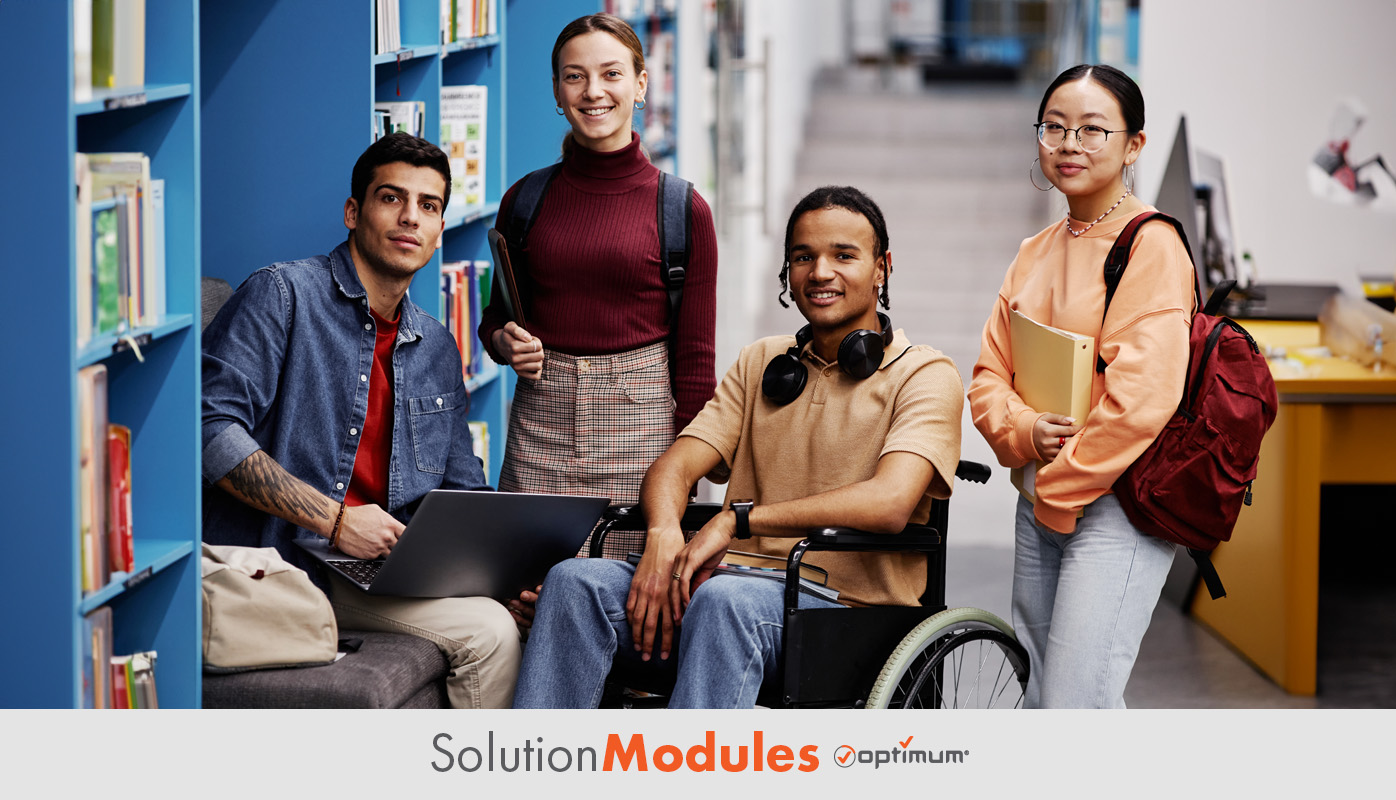
Accessibility is especially important for onboarding and inclusive student onboarding sends a strong signal that you’re ready to support students’ needs and empower them from the get-go. Let’s explore some of the details of creating an effective and inclusive onboarding process.

Understanding Accessibility
Building accessibility cannot just be done by providing physical adaptations. We must also consider the cognitive, sensory and technological dimensions. Structuring a welcoming onboarding process entails creating environments where all students feel included and validated.
Addressing Diverse Needs
Through an inclusive student onboarding process, students with disabilities will be accepted and supported for who they are and what they need to succeed. Educators can help maximize students’ strengths and enhance their ability to learn when they recognize the unique differences between individuals.
Teachers are essential in recognizing strengths and shaping experiences so students can engage and find meaning in learning, regardless of their differences, needs and preferences. Recognizing who each student is and what she needs to learn well helps create a sense of belonging in the classroom, a place that is safe and comfortable to take intellectual risks.
It makes students feel that they belong and it encourages them to become active participants in learning through a sense of ownership of their learning. Children will rise to the expectations placed on them.
Compliance Requirements
Legal mandates and frameworks exist in many jurisdictions that structure how educational environments can meet the needs of students with disabilities. Understanding these requirements is paramount for campus administrators, who have an obvious interest in ensuring compliance with human rights law.
These requirements must be well-understood, and institutions must comply scrupulously. In this way, educational institutions respect disability rights and provide equal educational opportunity.
Learning how to put these safeguards into action not only addresses these crucial equity goals, but makes the school experience a more supportive and nurturing place for all students.
Overcoming Barriers
While this is a steady and steady process of progress, it still lags behind reaching actual degrees of inclusivity. Physical access to buildings, as well as attitudinal barriers to full participation, remain concerns. These issues need to be addressed and forcefully advocated for.
From inadequate physical infrastructure to ingrained attitudinal factors, overcoming these obstacles will require communal perspectives, organized efforts and ongoing advocacy to create mutual environments where every person feels respected, valued and empowered.
Implementing Inclusive Strategies
Good disability student onboarding can involve everything from making the curriculum more flexible to proactively offering communication options for students. Anyone can benefit from being able to learn or express themselves differently, and by modelling such practices we create an environment where respect for diversity is not a courtesy, but our norm.
This can involve developing flexible curricula, as well as proactive communication: all strategies focus on the importance of everyone getting the best out of each other, and maintaining a culture of respect and fairness in all corners of the institution. By prioritizing the inclusive ethos from top to bottom, schools can transform into spaces where each girl and young woman feels heard, and can flourish in their learning.
Assistive Devices and Resources
Technology makes provisions for students with impaired ability to gain access to academic learning through supportive technologies. Assistive devices empower disabled students to engage fully in class work and extracurricular activities.
Building Capacity for Inclusion
It is important to provide teacher training to ensure educators are prepared to support disability In addition, it is imperative to ensure we provide teacher training to ensure educators are equipped and prepared to support individuals with diverse needs. This has to be an ongoing process, with professional development opportunities for educators, to ensure they are meeting various needs of the students successfully.
By making sustained learning possible, education systems enable teachers to redouble efforts toward creating learning environments where all children can thrive.
Fostering Empowerment
When we ‘give voice’ to their expressive forms, their variances and idiosyncrasies, we better understand the particulars of their experience, and the value of their contributions, to teaching and learning. This practice is one way to contribute to experiences of access and ‘voice equity’ in higher education. Equity is a goal that matters only if those whom we hope to benefit participate in achieving it. Giving students a voice in formal policy-making is a good place to start.
Collaborative Partnerships
Involving students in the student onboarding process builds out support networks, and taking a whole-child approach to access is better achieved through collaborative partnerships between educators, families and community stakeholders. Research shows that when all members of a child’s community hold shared goals, initiatives are far more likely to produce desired results.
By working in partnership, stakeholders can foster an environment that promotes the needs of all learners and contributes to improving the learning experience.

Conclusion
Providing student onboarding for students with disabilities is not merely an aspect of the legal duty to provide an inclusive education. It is an ethical obligation.
We encourage open communication and inclusion for a wide range of students. We also prioritize OT partnerships with families and community providers, and place a great deal of value on bringing exciting meetings to life and making sure our clients can fully engage with their surroundings. Contact us today and learn what Optimum can do for you.